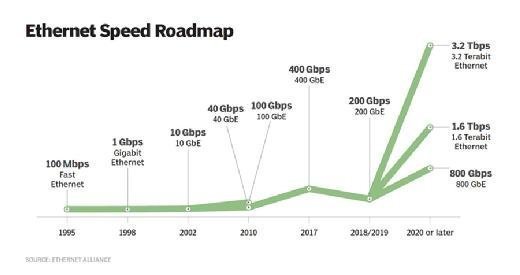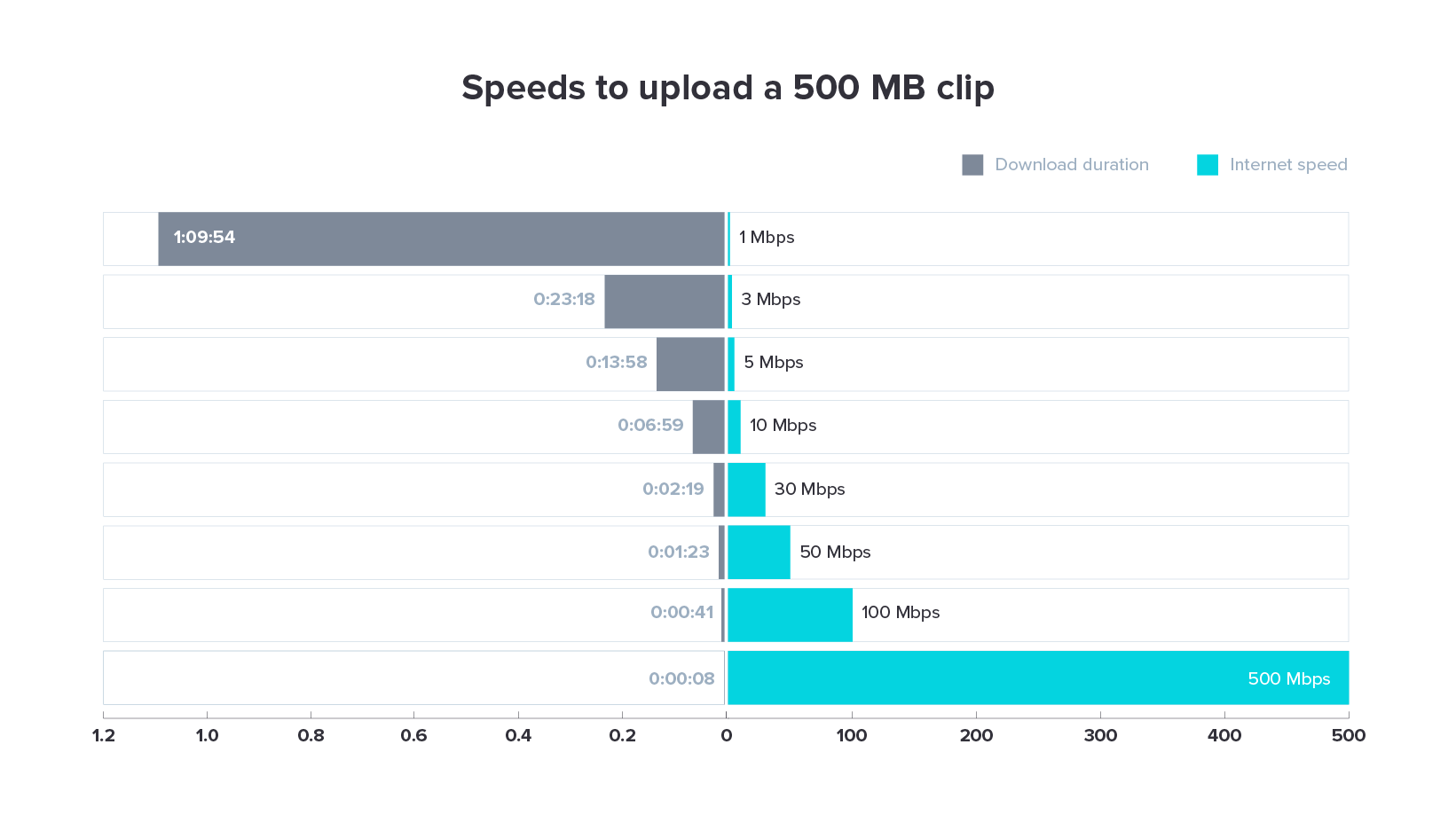The Future of Internet Speeds: Trends in Megabits Per Second
The Future of Internet Speeds: Trends in Megabits Per Second
Blog Article
How Megabits Per Second Impact Your Online Activities
The concept of megabits per second (Mbps) plays a critical role in forming our online experiences. Greater Mbps can enhance efficiency and reduce disturbances, while insufficient rates may cultivate disappointment and inefficiency.
Recognizing Megabits Per Second
When thinking about internet speed, it's important to comprehend the concept of megabits per second (Mbps), which functions as a basic dimension for data transfer rates. This statistics quantifies just how much data can be transferred over a net connection in one second, supplying a clear understanding of performance capacities - Megabits Per Second. For context, one megabit is equal to one million bits, and Mbps is generally used to reveal transmission capacity for various on the internet tasks
A higher Mbps suggests a quicker internet link, enabling individuals to execute jobs such as downloading data, surfing internet sites, and taking part in on the internet video gaming extra efficiently. Normal surfing calls for around 1-5 Mbps, while streaming high-def video may demand 5-25 Mbps. Understanding these demands is vital for determining the appropriate internet speed needed for particular activities.
Furthermore, the variety of tools attached to a network can influence total efficiency. Numerous customers streaming, video gaming, or downloading at the same time can strain offered data transfer, causing slower rates - Megabits Per Second. Examining individual online routines and demands is essential in picking a net strategy that lines up with one's requirements, guaranteeing a seamless digital experience
Streaming and Buffering Issues
Streaming high-def web content has actually come to be a staple of contemporary online home entertainment, yet it is typically gone along with by annoying buffering issues. These disturbances can dramatically diminish the seeing experience, resulting in frustration and possible loss of audience engagement. Buffering takes place when the data transmitted from the streaming solution is not gotten quickly sufficient to preserve a smooth playback, often as a result of inadequate internet rate measured in megabits per second (Mbps)

Moreover, real-time streaming can be influenced by network blockage, which takes place when numerous gadgets share the same transmission capacity. Maximizing connection speed and making certain appropriate Mbps is vital for a seamless streaming experience. As streaming services proceed to develop, understanding the influence of Mbps on buffering problems remains essential for consumers seeking continuous amusement.
Online Video Gaming Efficiency
The effect of internet rate on on-line tasks expands beyond streaming, dramatically influencing on-line video gaming performance. In affordable gaming, low latency and high bandwidth are vital for a seamless experience. A rapid connection lessens lag, allowing players to he has a good point respond swiftly to in-game occasions, which can be the difference between triumph and defeat.
Data transfer, gauged in megabits per second (Mbps), plays a crucial role in supporting numerous devices and video gaming systems at the same time. Not enough bandwidth can result in went down links or decreased game top quality, negatively affecting gameplay. On the internet multiplayer video games call for significant data transfer, particularly during peak video gaming hours when many gamers are online.
Hectic first-person shooters demand greater speeds to keep responsiveness, while turn-based strategy games might operate moderately well on lower rates. As on-line pc gaming proceeds to develop, with enhancing visual fidelity and more intricate multiplayer atmospheres, the demand for higher Mbps will only increase.
Video Clip Conferencing High Quality
In today's digital landscape, video conferencing high quality is greatly influenced by internet rate, specifically in regards to transmission capacity and latency. Top notch video clip calls need adequate bandwidth to transfer audio and video clip data effortlessly. Usually, a minimum of 1.5 Mbps upload and download rates is advised for basic interpretation video clip, while high-def video conferencing usually demands at the very least 3 Mbps.
Latency, or the delay in between sending and receiving information, likewise plays an important role in the user experience. Greater latency can lead to echo, lag, and disjointed communications, which can prevent cooperation and interaction during conferences.
In addition, multiple individuals in a video seminar can stress available bandwidth, requiring even greater rates. Network blockage, commonly brought on by synchronised activities like streaming or downloading, can additionally weaken video top quality. Therefore, for organizations relying upon video conferencing for remote cooperation, recognizing the relationship in between megabits per total and second communication quality is crucial for keeping productivity and enhancing digital communications.
Choosing the Right Net Plan
Picking an ideal net plan is vital for making sure optimal efficiency in different on-line activities, specifically in setups that demand high bandwidth, such as video conferencing and online video gaming. Megabits Per Second. When considering an internet plan, it is vital to assess both the speed and information allocation to match your specific usage requirements
For households with several users taking part in simultaneous tasks, a strategy using higher megabits per second (Mbps) is suggested. Normally, a minimum of 25 Mbps is ideal for typical streaming and browsing, while plans surpassing 100 Mbps are better for more extensive tasks. In addition, take into consideration the nature of your online activities; video clip conferencing calls for at least 1.5 Mbps post speed, while on the internet gaming might need a reduced latency yet regular link.
It is additionally important to analyze your data cap. Unlimited information strategies can prevent strangling and disturbances, especially if hefty usage is expected. Study service providers in your area, as schedule and rates can differ. By thoughtfully choosing a net strategy customized to your needs, you can improve your on the internet her comment is here experience, guaranteeing smooth, uninterrupted accessibility to your favored tasks.
Verdict
Finally, the significance of megabits per second (Mbps) fit online activities can not be overstated. Greater Mbps assists in seamless streaming, reduces buffering, improves gaming experiences, and makes certain top notch video conferencing. On the other hand, poor bandwidth can result in discouraging disturbances and diminished performance throughout different tasks. A thorough understanding of private or house Mbps demands is necessary for choosing an ideal web plan that appropriately supports varied online tasks and customer demands.

Normally, a minimum of 25 Mbps pop over to this web-site is ideal for standard streaming and browsing, while plans going beyond 100 Mbps are better for more extensive jobs. In addition, consider the nature of your online activities; video clip conferencing needs at the very least 1.5 Mbps publish speed, while online pc gaming may require a reduced latency yet consistent link.
Report this page